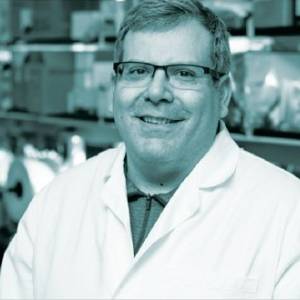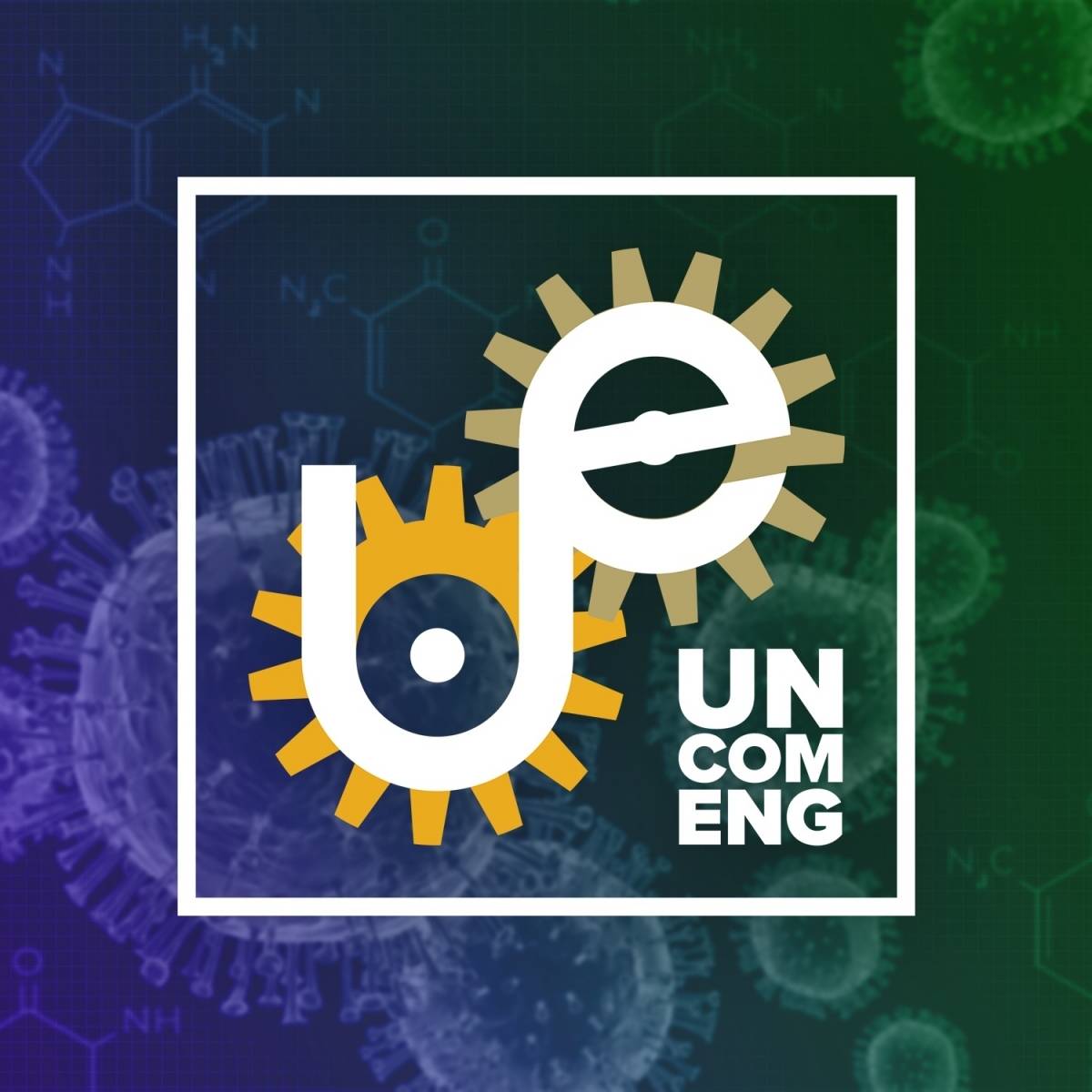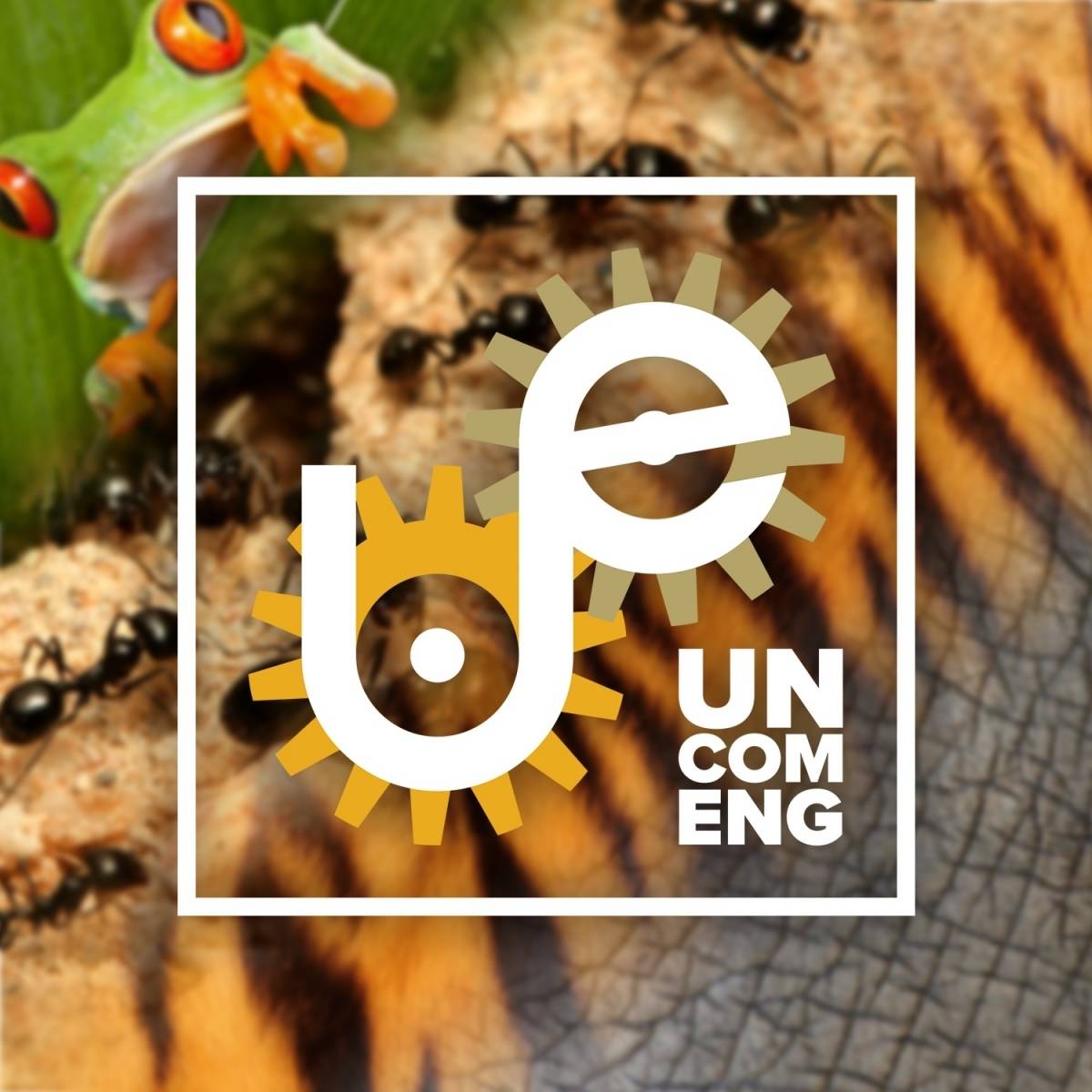Steve W. McLaughlin

Philip Santangelo

Audio
Audio & Captions
Transcript
Steve McLaughlin: Women continue to be disproportionately affected by HIV around the world, especially in sub-Saharan Africa where three and four new HIV infections are among young girls. But what can be done in these communities where access to once-a-day pill preventatives is nonexistent? Welcome to another episode of The Uncommon Engineer podcast. I'm Steve McLaughlin, dean of the Georgia Tech College of Engineering. The Uncommon Engineer discusses how Georgia Tech engineers make a difference in our world, in our daily lives, and in ways you might not expect. Our guest today is Dr. Phil Santangelo. He's a professor in the Coulter Department of Biomedical Engineering between Georgia Tech and Emory. His research is focused on treating diseases like HIV through RNA-based therapies, and he's getting close to delivering an HIV preventative for women.
Welcome to the program, Phil.
Phil Santangelo: Thank you for having me.
Steve: So I'd really like to just jump straight into your work around prevention of transmission of viruses. It's so incredibly exciting and so incredibly— so much potential, and I know that you use RNA. And so before we kind of get into that, I think most of our listeners have had high school biology and they learned a little bit about DNA and RNA. Can you kind of start at that level, remind everyone about RNA, and then maybe segue into how you're using it to prevent transmission of viruses?
Phil: Sure. Absolutely. RNA stands for ribonucleic acids. RNA— all of your cells are full of RNA molecules, and they have— for the longest time they did not think they had a lot of function, that they would act as an intermediary between DNA and protein. But over time, we found that not only are they translated into proteins, but they have other functions also. And so folks started thinking about could we use them as therapeutics? Could we use them? And there's been a history now of probably 20 years or so where folks have been thinking about how to use RNA as a therapeutic. But it was really, I would say our journey into using RNA really started from a detection point of view. I was interested in viruses and viral pathogenesis, and we started creating probes to detect viral nucleic acid, specifically viral RNA. And, you know, and the viewers should realize that most of the significant viruses that cause disease in humans are caused by viruses that have RNA as their genome, as their gut, so to speak.
Steve: Let me see if I have this right, because I think most people do think of, you know, a part of our nature is encoded in DNA and you have potentially or actually identified segments of RNA that you— like you said, you are fabricating your own RNA, and so the idea is you have found the segments in the RNA that we might modify or change or alter so that down the line, as RNA does its work, the changes in RNA that you facilitated result in ultimately kind of our own immune system providing new therapies to combat various diseases. Your work is beginning to receive a lot of attention because of the potential— really revolutionary— new therapies, or a kind of supercharged immune system based on RNA. What I’m hoping you could do is talk a little bit, at a high level, around preventing HIV or significantly lessening HIV transmission or other virus transmission. Could you talk about some of those experiments and the results and where you are?
Phil: Sure. And so we started delivering RNA actually into the female reproductive tract. And we did some pilot experiments with a colleague of mine at Universal of Louisiana at Lafayette, in the macaque model, and we saw some pretty astounding data regarding our ability to express antibodies against HIV in that space. And so we went to the Bill and Melinda Gates Foundation and said, “Hey, you guys are very interested in preventing HIV.” And even though prep is extremely useful, there are some limitations to prep. You have to take a pill usually every day and even though there's some long-acting prep [indistinct] coming, I think in the near future, but there are also some side effects to prep, too. And so we thought, is there something really simple that we could do inexpensive and that could last a long time that could shield women and possibly men, too, from HIV? And so when we talked with them, they were specifically more interested in preventing HIV in women in particular. And we embarked on a number of experiments, both in a number of different animal models to examine our ability to produce antibodies against HIV in the female reproductive tract. And we've been actually quite successful in that area so far.
So we've done a number of experiments where we have a very simple formulation. It would be something that a woman could easily give to herself whenever she wanted. It’s really very straight forward. And we've have some evidence that it can last up to three months, actually, which is pretty exciting. And I think possibly longer after a single dose. And so this was incredibly exciting for us because we are thinking now that not only using this for HIV but for other applications. And we recently received NIH grant— or I should say it's about to show up— on another application of using RNA in the female reproductive tract. And so there has been a lot of incredible drugs, a lot of really interesting work out there, but actually in the last 20 or 30 years, there really hasn't been as much research as one might imagine. And so I thought that this is a tremendous opportunity for us. I mean, anything that we do that could affect the health of half the population of the Earth is pretty exciting, if you ask me. I mean, you know, if I finish my career and yeah, we've helped to prevent HIV, maybe, you know, and other pathogens and other issues in women in a way that allows them to apply it when they want to, and it's safe— I mean, it's a little pie in the sky, I'll admit. But at the same time, if that's the goal and we could you know, make gains towards that goal, even in my career, I'm going to sleep really well when I'm finished.
Steve: You know, there's the flip side of, you know, turning the immune system, supercharging the immune system through methods. One of the things that we keep hearing about, particularly from the defense community, is kind of the opposite— you know, are we worried that an adversary is going to develop something that turns the immune system against people? And as a as a weapon of war, can some of the tools that you and others are working on, you know, how do we prevent— how do we prevent the unbelievably positive advances that y’all are going to make, but for those adversaries who may want to use that same technology to turn us against this, what are your thoughts on that? And can we prevent it? How do we prevent it? What do we do as a society to make sure that doesn't happen?
Phil: This is a very big topic of conversation right now. I've been involved in discussions with the CDC in the last month, discussions with DTRA and DARPA about some of these issues, and there are ongoing conversations occurring regarding this particular issue and what safeguards need to be in place both in the lab, even at Georgia Tech. I mean, we do have CUI, Controlled Unclassified Information, requirements actually on this grant. And so how do we deal with information? How are we ethically releasing information? And so I do think that this is an ongoing conversation, and it's certainly not— it's evolving, but it's certainly a conversation that's occurring. I think one of the ways to prevent the evil parts from happening is to continue communication among all of us. So as a community, as the scientific community, really making sure that we're communicating about what we're doing and how we're doing about the ethics of what we're doing and how we're doing it; by communicating with the public about the experiments we're doing, what the goals of the experiments are, what we're trying to achieve in those experiments and, at the same time, really communicating again among even folks in the lab— I mean, really trying to build a community of ethical behavior.
Steve: Your ability to kind of supercharge, you know, through messenger RNA, you know, the immune system, is— I think even folks who just have had a little bit of biology kind of get that, and that's amazing. I have so many questions. First one, kind of, you know, my guess is when you make this RNA— again, I'm an electrical engineer— you know, kind of imagine creating, you know, a bunch of, you know, a small sample that you could do in the lab, and in order to turn it into a therapy I think I recognize that you need to replicate this by thousands, hundreds of thousands, millions, billions as you develop a therapy to really, truly attack something. And so that kind of scaling process of taking something— in order to turn something into a therapy, you know, making your special sauce and then scaling it up, can you talk a little bit about that? Because where I’m actually really headed towards is you're a biomedical engineer, you know, you're not a physician; you know a lot of basic biology and basic science, but at the end of the day, I think, you're an engineer, and I'm really curious about how being an engineer— I asked about how to scale, but I'm also kind of asking, I’ll bet you there's an engineering piece to that other than just the basic science.
Phil: So there are a number of engineering aspects to this problem. I mean, everything from literally engineering of the molecules that we're making, the mRNA itself, but you're certainly right that production is, and scale up, is something that we're going to have to confront. I mean, we've already done this. Interestingly enough, even in the lab when we started, we were making pretty small quantities— I mean, microgram quantities. And then we had to take— at a certain point, we had to actually stop and say, let's assess our current process. How can we change this? Because, first of all, it was too expensive. And so we started looking at changing sources for certain some of the chemicals that we use. And so we actually started making relationships with some of the actual first primary manufacturers of some of the enzymes that we use in particular. And so by making those relationships, we were able to go right to the source. We were able to cut costs significantly. But then we had to optimize the process. And so I had one student and one postdoc who basically spent a month, I think, or two, in the lab doing nothing. And I mean, in the lab, I think they went home sometimes, but optimizing this process. And so it took a bit of work to do that. And since then, we've been continuing to optimize and scale up is a part of— now, whenever we say optimize some aspect of RNA production, we then immediately go into scale up mode. But scale up mode for us are hundreds of migs now. So we went from micrograms to hundreds of migs, actually, and we even have companies who want us to make RNA for them. And so we've been so we've scaled into hundreds of migs pretty easily. I think we can get to grams without a ton of work just at Georgia Tech. But you're certainly right— once we get, I think, beyond grams, this will have to transition either to one of the RNA pharmaceutical companies, have them pick it up, or to be honest, there's some interest in our own lab about starting a company to produce RNA because we've had interest from a number of companies for us to produce RNA for them, which was a little surprising at first. But I think, you know, we're very open about what we do and how we do it. In addition to that, the way we characterize our product is a little different than some of the manufacturers out there. And so I think that's an opportunity. But just the same, I think eventually we're either going to start our own company to move this forward, or we'll transition it to a partner.
Steve: What got you to where it is you are now in terms of being an engineer and wanting to do the things that you do?
Phil: Sure. So I have a crazy path. And I always tell students that my path to where I am now is circuitous; it goes across the country, various parts of the world, and so I would never have predicted that I am doing what I'm doing right now. But there is a uniform— I would say there is a unifying theme and that is I like solving problems. I mean, that is what I like to do. Hard problems, difficult problems, crazy problems— I mean, that's what I jump into. And so I actually started as an aerospace engineer. And so I was trained as an aerospace and then mechanical, and I worked in thermal fluids for a long time, and I worked in optics. And I loved airplanes growing up— I mean, loved them— rockets, space program. And so that was what I enjoyed tremendously. But over time, I was more and more interested in the science behind fluid mechanics. And I really became an applied physicist, I would say more than anything else. And then I was working, and then I decided at a certain point, because of— actually I was working in industry and that industry was starting to have a lot of problems. And so I thought, where should I focus my attention now? Where are there really important problems that I could focus my attention on? And I thought biology was the next place to do that. And I'll admit, even when I was working in— I worked in combustion for a while— I was at Sandia National Labs as a postdoc. And I'll never forget this, but Paul Miles, who was a researcher there— he may still be there— said to me, “There's limits to what we can do in this space. Go find a problem where you don't think there are limits and see where you can explore.” And I thought that was, you know, at the time, I thought, what's he talking about? And so but then at a certain point in my career, I thought, hey, biology, that's the place where I think there's limitless things to do and problems to solve.
Steve: So, Phil, one of the questions we always ask on The Uncommon Engineer is what makes you an uncommon engineer?
Phil: Oh, a lot of things. But I think by background, one, that I have worked— well, two things— my educational background is pretty varied and my training is pretty varied. At the same time, I would say, also, I've worked in a lot of different places. I started out in academia. I worked in government for a little. I was a postdoc at Sandia National Labs. I worked in industry for a little while then came back to and the academic world. But I think that diversity of experience, of thought, of interactions, makes me, I think, reasonably uncommon, even though I think that's becoming more common, which I think is a good thing.
Steve: Can't thank you enough for coming today and talking with us. You know, the work that you're doing is just really remarkable and, you know, hopeful. There's a lot of patients out there when they hear those kinds of things that will make them very, very, very hopeful for the work and really grateful for the work you're doing and for choosing Georgia Tech to do all that work. So thanks for coming, and thanks for everything you're doing for the campus and for at least half the population of the globe.
Phil: I appreciate it. Thank you.
[marching band music]
Geekout
Audio & Captions
Transcript
[big band swing music]
[audio montage]—Steve McLaughlin: Sounds incredibly complex—it sounds like—need to have abilities that span—I’m really geeking out here.
[laughter and applause]
[music]
Philip Santangelo: One of my overarching issues about how we how we approach science is that we try to approach it from what is really going on in the world—what is reality, and how can we as engineers confront real problems that people really have? And I think that, you know, overall, that's something that sometimes we don't like to talk about some of these problems because they're sensitive and difficult and complex and messy. But I guess I've never shied away from those; I always seem to jump into problems that are horribly difficult and challenging and do them anyway.
Steve McLaughlin: But I mean, yeah, we would love to find ways to overcome those cultural barriers, right? I mean, you know, why is it so difficult for us to talk about some of these things? And then, if it's difficult to talk about, it might be difficult to start a lab around some of these difficult topics. And I think we would love—I mean, that's why we're so incredibly grateful for the work that you're doing because you're just kind of plowing through those, and having half of the world's population in your field of view and going at those challenges and problems from that perspective as opposed to, you know, talking about an applicator and, you know, more things that are sometimes difficult for men to talk about. And so I give you enormous amount of credit for just kind of just passing straight through those because, you know, I think physicians and others are really comfortable that; engineers, less so.
Philip: I would agree. I certainly agree. And I think when it comes down to it, it's about seeing once you're aware of what—and I'll admit, part of it has been my, you know, I don't know everything. I'm unaware of lots of things. And so when something is made aware to me and I see a huge opportunity from a scientific point of view, it's go, go, go.
Steve: A couple weeks ago someone said something to me that the world is changing so fast, that what we should be doing is educating engineers or students, not just how to learn how to learn, but how to learn how to unlearn. And I wonder, there must have been some of that there, too, in that, you know, you switch from aerospace engineering to biology. And there must be some things that you had to say, “You know what? I need to I need to unlearn some things,” or is that an accurate statement? Because I really love that idea because I think we really do need to have a “learn how to unlearn,” to really be as adaptable as we need to be.
Philip: I think to some degree, yes. I mean, I would say, you know, if you think about, especially when I was at Purdue, you know, we were taught to solve problems in a very constrained sort of way to some degree. It was really great as a student because you knew exactly what you had to do and to lay out the problem in a certain way. You had to state it in a certain way. You had state all of your assumptions. All those were really good thought—they were really good exercises. But at the same time, in biology, one of the problems is that you have way too many variables. There are a lot of variables. And so you have to think very carefully about that. And the measurement systems—the way you measure anything is not nearly as precise as many of the tools we use in engineering. So you had to really walk that back a bit and say, hey, you really need to think when you're measuring how large something, how long this table is, so to speak, we can measure that very precisely. If you measure that 10 times, your standard deviation is going to be incredibly low; it should be. And so in biology, your standard deviation from cell to cell, from individual to individual, animal to animal can be very large. And so if you do have to unlearn a little bit about how you see heterogeneity. And I think, you know, in in the engineering world, we can make thousands of screws and they're all very similar—I mean, incredibly similar. And at the same time, there's always tolerances, so I understand that. But I mean, the heterogeneity in biology is much larger.
And then on our new DARPA program, we're really taking it to another level in terms of the use of RNA, where instead of just expressing antibodies against a particular pathogen, we're doing some other things that I think are really quite exciting. I mean, DARPA, there's a there's a term, I guess I hear quite a lot in dealing with DARPA; is called “DARPA hard.” And so, you know, “DARPA hard” means it's really hard. And so it's not something that usually a lot of funding agencies will take on because there's too much risk—that's exactly what DARPA is about. And so and I don't think I'm talking out of turn there; I think they would agree with that.
And so what we wanted to do was really change the paradigm for how we prevent infections, how we treat infections, and how we even enhance our own immune responses. And so we put together a team where we're using—again, RNA is at the heart of it—our RNA-based therapeutics to actually express molecules that will chew up viral RNA, that target it, and then just processively chew it up. We're actually expressing other molecules that will alter gene expression transiently and safely in the lung. So we're not doing any cutting of DNA. We're not altering your DNA in a permanent fashion. But we're able to turn on genes or turn off genes in order to create an antiviral environment within the lung.
And then there are the additional projects involve—one of the first responses to an infection or neutrophils. Neutrophils will come into the lung to essentially attack the pathogen. Well, if you alter the gene expression in neutrophils, you can get them to even work more efficiently. And so and then there's one other project. There’s a lot of projects in that project. There's a lot going on where we're actually—many of us say have received flu vaccines. Unfortunately, the flu vaccine efficacy is not as high as we'd like it to be even though everyone should still get a flu vaccine, no question. My colleagues at the CDC would chastise me for not talking about that because it's still very effective. But can we improve its potency? And so we have a part of the project where we're altering gene expression in T cells and B cells in order to improve—if you've been vaccinated—improve the response of that vaccine. And I think, you know, across—we tried to attack the problem from a lot of different avenues using RNA, again, at the heart of it as our therapeutic but in a way that's really paradigm-shifting, that's different in terms of how we can we enhance the way the body functions, but in a transient safe way that will allow us to prevent those infections or treat those infections, because our own body's defenses can be very useful, to be perfectly honest. And unfortunately, though, we don't have drugs to really interact with the body in that way to enhance those effects. And so if we can make the body a little better for a short period of time, we think that that'll be—DARPA does have an interest in in human health overall. They have, obviously, they have a defense slant on that, but it's about keeping both the warfighter and our population as healthy as possible because human health is important to our country, period.
And so more recently, it was the last few years that I think they started the biotechnology office, but I know that they were doing biotech before that. And so when BTO started, there's obviously a greater focus on biotech in particular, but they have a strong interest in vaccines and developing better vaccines and treatments for a whole host of issues that have to do with human health. Now, again, usually it has this national security slant to it. But just the same, influenza is important to all of us. And clearly, it can be problematic both among in our population and obviously for folks, the warfighter. And so it's important in both the arenas.
[marching band music]






